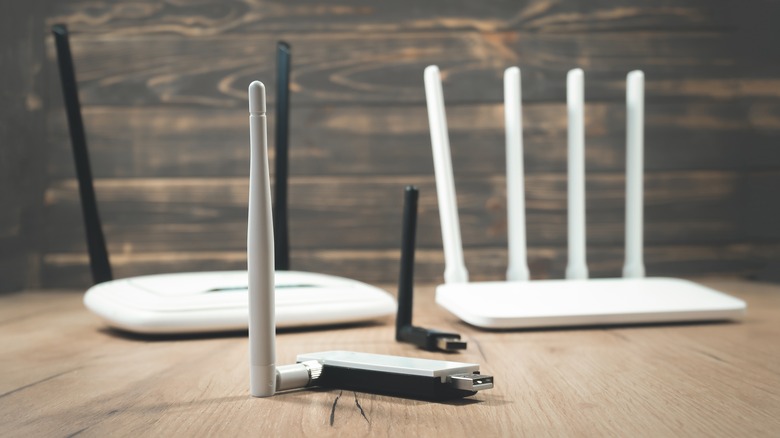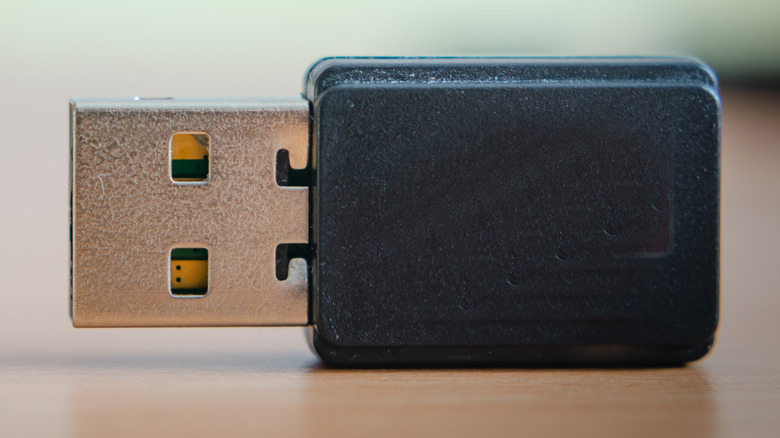Why You Might Not Want To Use USB Wi-Fi Adapters As Your Home Solution
If you're looking to add Wi-Fi capabilities to an existing computer, your options are pretty limited. You can either install a Wi-Fi card that connects to your motherboard using PCI Express or you can plug in an external Wi-Fi adapter that connects over USB.
While installing a PCI Express device is relatively simple, most people, understandably, don't want to open up their computers for any reason. That's where USB Wi-Fi adapters often come in handy — well, that and upgrading the Wi-Fi on a notebook computer since notebook expansion cards don't really exist anymore. Still, as with many USB alternatives, they're not necessarily as good as the internal versions that are hidden away.
With that in mind, let's take a look at look at why, if you can manage it, it's best to avoid USB Wi-Fi adapters and focus on the PCI Express options for the best possible Wi-Fi performance.
USB has its limitations
The obvious advantage of using a USB Wi-Fi is simplicity. There's no opening of the case, no paranoia about static electricity, and no tools are needed to install them. Though they come in many varieties, they often feature incredibly low-profile designs, and some are smaller than even a thumb drive. This has inherent limitations, though.
Many USB Wi-Fi adapters — particularly those sleek, low-profile versions — don't have external antennae, and if they do, they often just have one. PCI Express Wi-Fi adapters are a lot more likely to include multiple antennae, often up to three. The lack of an external antenna naturally limits the quality of reception on the Wi-Fi adapter and can greatly limit your data transfer speeds.
Another downside of the USB option is less obvious: cooling. Or, more specifically, lack thereof. The chipset on a PCI Express Wi-Fi card has a dedicated heatsink. Most USB Wi-Fi adapters don't have room for that, so they're more prone to overheating and thus dropping your connection.
The speed limitations of USB also used to be an issue for USB Wi-Fi adapters, but the widespread adoption of USB 3.0 (and beyond), with its telltale blue-colored USB Type-A connector, has changed that. With USB 3.0 being capable of 4.8 Gbps, it can keep up with the full capabilities of every Wi-Fi standard other than the newest one, 802.11ax, better known as Wi-Fi 6. Unless you live in one of the rare markets that are now offering eight-gigabit fiber internet, then those top speeds are only for local network transfers, anyway.

